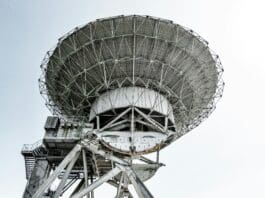This post is also available in:
 עברית (Hebrew)
עברית (Hebrew)
Underwater surveillance is frequently challenged by the problem of back-scatter caused by light reflecting off particles suspended in the water. An underwater 3D laser camera to be launched soon will be able to map the sea bed, help monitor fish stocks, detect marine pollution and integrate in a navigation system for autonomous underwater vehicles. The camera is described as a “game-changer” for maritime applications.
The technology was developed under the €5.7 million “UTOFIA” project, part of Europe’s Horizon 2020 innovation program. It will be commercialized by Subsea Tech, one of seven partners that took part in the three-year effort.
According to optics.org, the system is said to use a combination of innovative technologies to obtain clear images in low-visibility environments. Instead of using a continuous-wave source of light, the UTOFIA system emits nanosecond laser pulses that are range-gated (the process of selecting radar echoes that lie within a small range interval) by an optical shutter and simple camera sensor to yield time-of-flight data, enhanced by software capable of distinguishing any back-scattered noise.
“The use of range-gating to reduce back-scatter was previously limited to very high-cost, highly complex systems,” says the team, which last year tested the system at a tuna farm off the Spanish coast. “UTOFIA is the first system to achieve range-gating using a CMOS sensor, common to most digital cameras, enabling a much more cost-effective and compact system.”
Tests have showed “highly promising” results both monitoring fish stocks and as part of a navigation system for autonomous underwater vehicles.
Project coordinator Jens Thielemann from Norway’s SINTEF summed up the progress made under the project, saying: “Before UTOFIA there was no real full-field, real-time 3D technology available on the market with a range of several meters. Existing approaches either provided an incomplete image, or had a limited 3D viewing range. UTOFIA has opened up a new underwater imaging approach that will expand the market for underwater surveillance in areas such as marine science, public sector environmental monitoring, commercial fisheries, underwater archaeology, and all kinds of sub-sea technologies – including autonomous vehicles.”
Among the partners to provide photonics expertise in the UTOFIA project were the Italian laser developer Bright Solutions, and UK-based Rockwell Automation subsidiary Odos Imaging.




